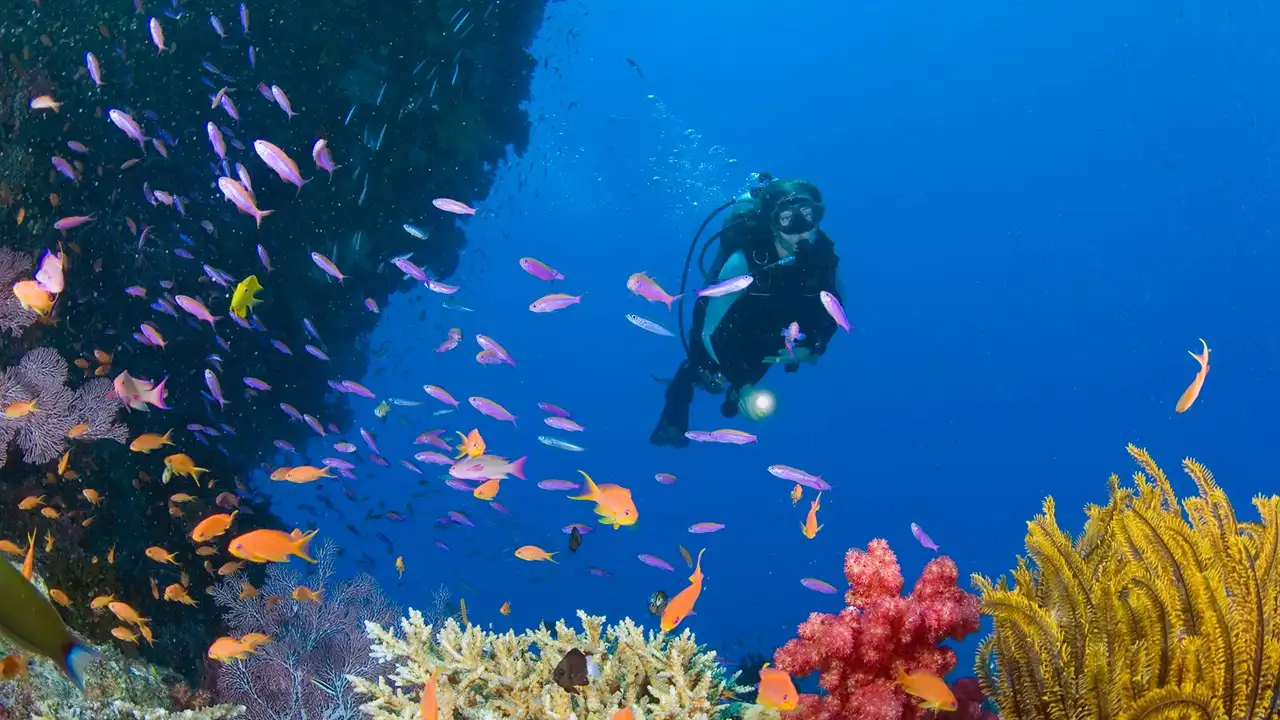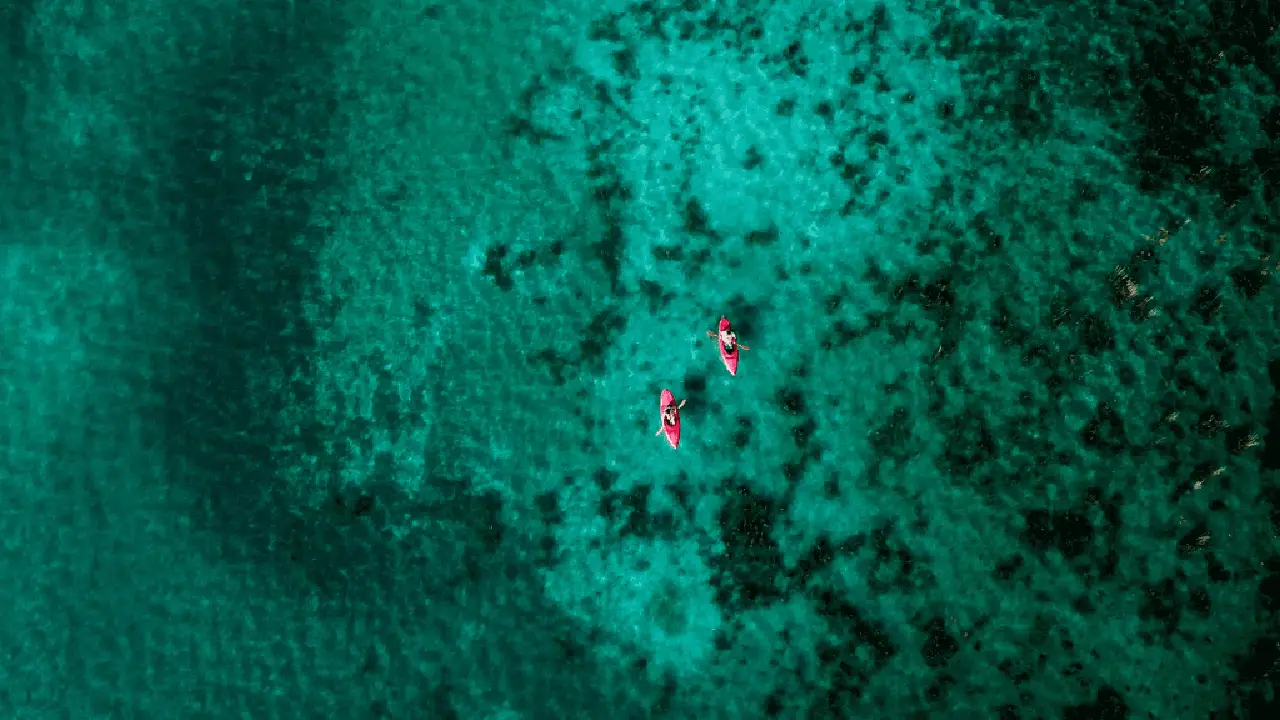9 Coastal Scuba Diving Spots with Vibrant Marine Life
Explore 9 coastal scuba diving spots offering vibrant marine life, coral reefs, and underwater adventures. This guide will take you through some of the best locations worldwide, focusing on sites accessible from the US and Southeast Asia. Meta Description: Dive into the underwater world! Discover the best scuba diving spots with vibrant marine life, from coral reefs to unique underwater adventures. Perfect for divers of all levels.

Best Scuba Diving Locations in Southeast Asia for Marine Life
Southeast Asia is a scuba diving paradise, boasting some of the world's most biodiverse waters. Here are a few standout locations:
Raja Ampat, Indonesia: A Biodiversity Hotspot
Raja Ampat, located in West Papua, Indonesia, is renowned for its staggering marine biodiversity. It's often referred to as the "Amazon of the Seas" due to the sheer number of species found here. Expect to see everything from pygmy seahorses to manta rays.
Diving Conditions: Visibility is typically excellent (20-40 meters), and water temperatures range from 28-30°C (82-86°F). The currents can be strong, making it better suited for experienced divers.
Marine Life: Whale sharks, manta rays, reef sharks, turtles, nudibranchs, and countless species of fish.
Gear Recommendation: A reliable dive computer like the Suunto EON Core (approx. $700) is essential for navigating the currents and monitoring depth. A good quality wetsuit (3mm) like the Aqua Lung SolAfx (approx. $300) will keep you comfortable.
Sipadan Island, Malaysia: A Protected Paradise
Sipadan, off the coast of Sabah, Malaysia, is a small oceanic island that rises from the seabed. It's a protected area, with limited diving permits issued daily, ensuring the preservation of its pristine ecosystem.
Diving Conditions: Excellent visibility (20-30 meters) and warm waters (28-30°C/82-86°F). Currents can be moderate to strong.
Marine Life: Green and hawksbill turtles, barracuda schools, reef sharks, hammerhead sharks (occasionally), and vibrant coral reefs.
Gear Recommendation: A dive light like the SeaLife Sea Dragon Mini 1300S (approx. $250) will help you explore the underwater caves and crevices. A sturdy BCD like the Scubapro Hydros Pro (approx. $700) is recommended for comfort and stability.
Richelieu Rock, Thailand: A Whale Shark Magnet
Richelieu Rock, part of the Surin Islands National Park in Thailand, is a submerged pinnacle teeming with marine life. It’s famous for its frequent whale shark sightings.
Diving Conditions: Visibility varies (5-25 meters), and water temperatures are typically around 28-29°C (82-84°F). The current can be strong.
Marine Life: Whale sharks, manta rays, seahorses, frogfish, nudibranchs, and colorful soft corals.
Gear Recommendation: A good dive mask like the Cressi Calibro (approx. $100) will ensure a clear view. A dive camera like the GoPro HERO11 Black (approx. $400) will capture the incredible marine life.
Top Scuba Diving Spots in the USA with Diverse Marine Ecosystems
The US offers a variety of diving experiences, from tropical reefs to kelp forests. Here are some of the best:
Florida Keys National Marine Sanctuary, Florida: Coral Reef Paradise
The Florida Keys National Marine Sanctuary protects the only living coral barrier reef in the continental United States. Key Largo, Marathon, and Key West offer numerous dive sites.
Diving Conditions: Visibility is generally good (15-30 meters), and water temperatures range from 24-30°C (75-86°F) depending on the season. Currents are generally mild.
Marine Life: Colorful coral reefs, tropical fish, sea turtles, nurse sharks, and dolphins.
Gear Recommendation: A lightweight wetsuit (3mm) like the Mares Pioneer 3mm (approx. $200) is suitable for most of the year. A dive computer like the Shearwater Peregrine (approx. $500) is highly recommended.
Monterey Bay, California: Kelp Forest Adventures
Monterey Bay is famous for its kelp forests, which provide habitat for a diverse array of marine life. Diving here offers a unique experience, but the water is cold.
Diving Conditions: Visibility can be variable (3-10 meters), and water temperatures range from 10-15°C (50-59°F). Surge can be strong.
Marine Life: Sea otters, harbor seals, sea lions, kelpfish, nudibranchs, and various invertebrates.
Gear Recommendation: A drysuit like the Bare X-Mission Drysuit (approx. $1500) is essential for diving in Monterey Bay. A good hood and gloves like the Waterproof H1 5/10mm Hood (approx. $100) and Waterproof G1 5mm Gloves (approx. $80) are also necessary.
Channel Islands National Park, California: Island Biodiversity
The Channel Islands, off the coast of Southern California, offer diverse diving experiences, from kelp forests to rocky reefs. Each island has its unique marine life.
Diving Conditions: Visibility varies (5-20 meters), and water temperatures range from 12-18°C (54-64°F). Currents can be strong.
Marine Life: Garibaldi (California's state fish), sea lions, harbor seals, kelp forests, and numerous invertebrates.
Gear Recommendation: A 7mm wetsuit like the Henderson Thermoprene Pro 7mm (approx. $400) with a hooded vest is recommended. A powerful dive light like the Light & Motion Sola Dive 1200 (approx. $400) is helpful.
Comparing Diving Gear for Different Environments
Choosing the right diving gear is crucial for a safe and enjoyable experience. Here's a comparison of some key items:
Wetsuits vs. Drysuits
Wetsuits: Made of neoprene, they allow a thin layer of water to enter, which is then warmed by your body. Suitable for warmer waters (above 24°C/75°F). Pros: More affordable, easier to put on. Cons: Less insulation in cold water.
Drysuits: Keep you completely dry by sealing at the wrists, neck, and ankles. Suitable for cold waters (below 15°C/59°F). Pros: Excellent insulation, allows for layering. Cons: More expensive, requires specialized training.
Dive Computers: Basic vs. Advanced
Basic Dive Computers: Provide essential information like depth, dive time, and no-decompression limits. Example: Cressi Leonardo (approx. $250). Pros: Affordable, easy to use. Cons: Limited features.
Advanced Dive Computers: Offer features like air integration, digital compass, and customizable settings. Example: Garmin Descent Mk2i (approx. $1500). Pros: Comprehensive features, enhanced safety. Cons: More expensive, steeper learning curve.
Dive Lights: Entry-Level vs. Professional
Entry-Level Dive Lights: Suitable for recreational diving in clear waters. Example: OrcaTorch D500 (approx. $100). Pros: Affordable, compact. Cons: Lower light output.
Professional Dive Lights: Offer high light output, long battery life, and durable construction. Example: Bigblue TL48000P (approx. $800). Pros: Powerful, reliable. Cons: More expensive, bulkier.
Tips for Responsible Scuba Diving
Protecting our oceans is essential for the future of scuba diving. Here are some tips for responsible diving:
* Avoid touching coral or marine life.
* Maintain good buoyancy control to prevent damaging reefs.
* Don't feed the fish.
* Take only pictures, leave only bubbles.
* Choose eco-friendly dive operators.
* Participate in coastal clean-up efforts.
So, whether you're exploring the vibrant reefs of Southeast Asia or the kelp forests of California, remember to dive responsibly and enjoy the incredible beauty of our underwater world!
:max_bytes(150000):strip_icc()/277019-baked-pork-chops-with-cream-of-mushroom-soup-DDMFS-beauty-4x3-BG-7505-5762b731cf30447d9cbbbbbf387beafa.jpg)





